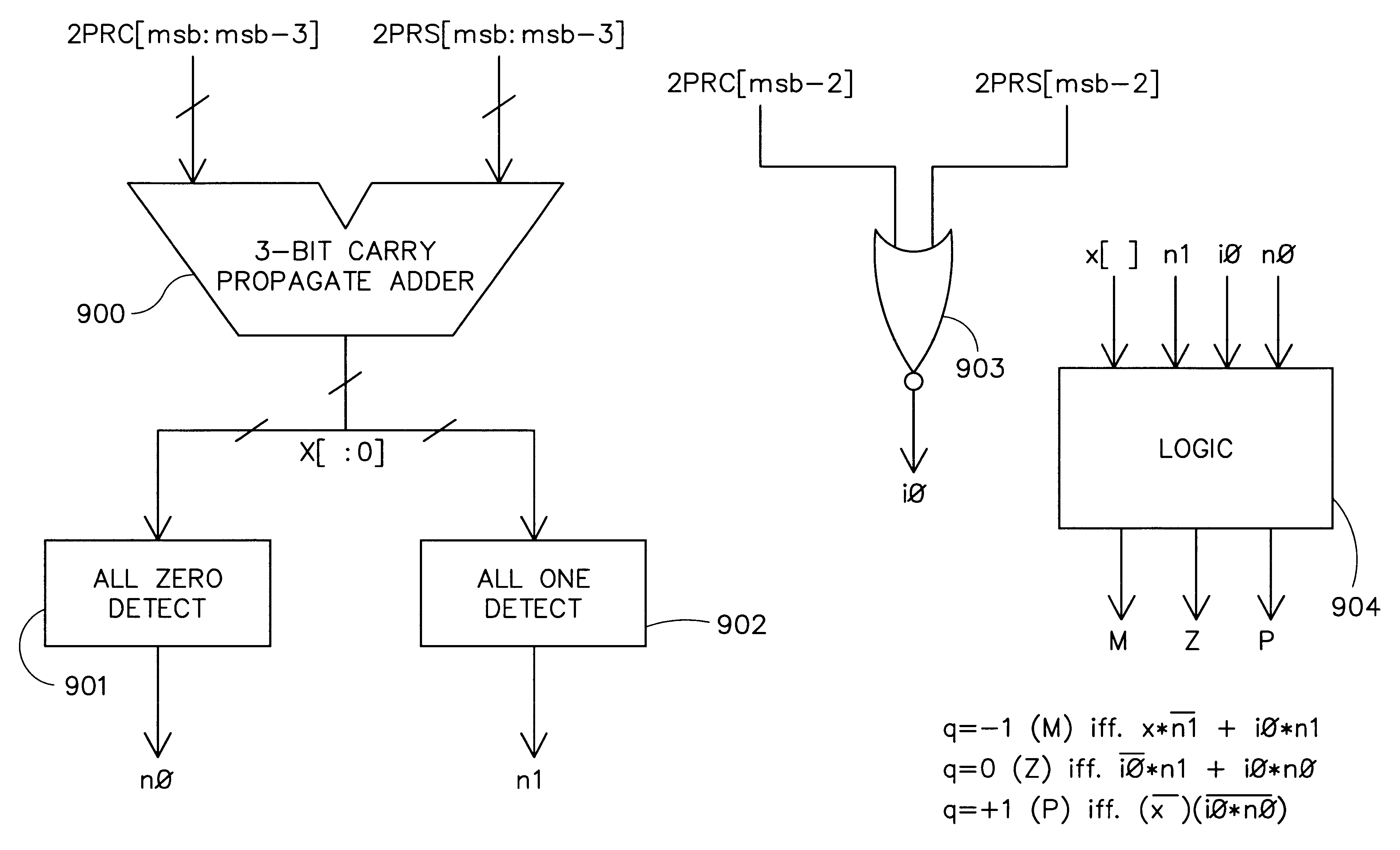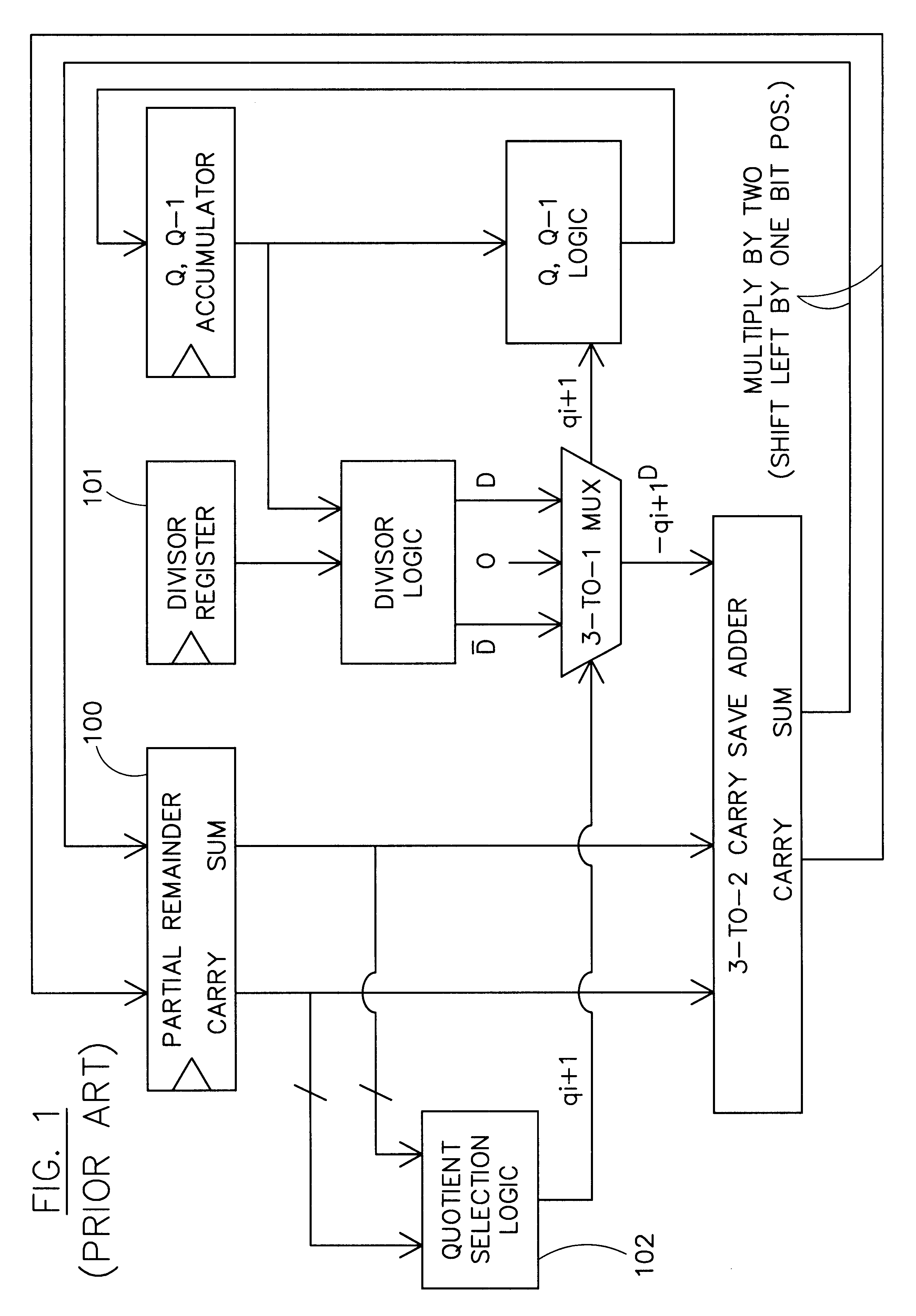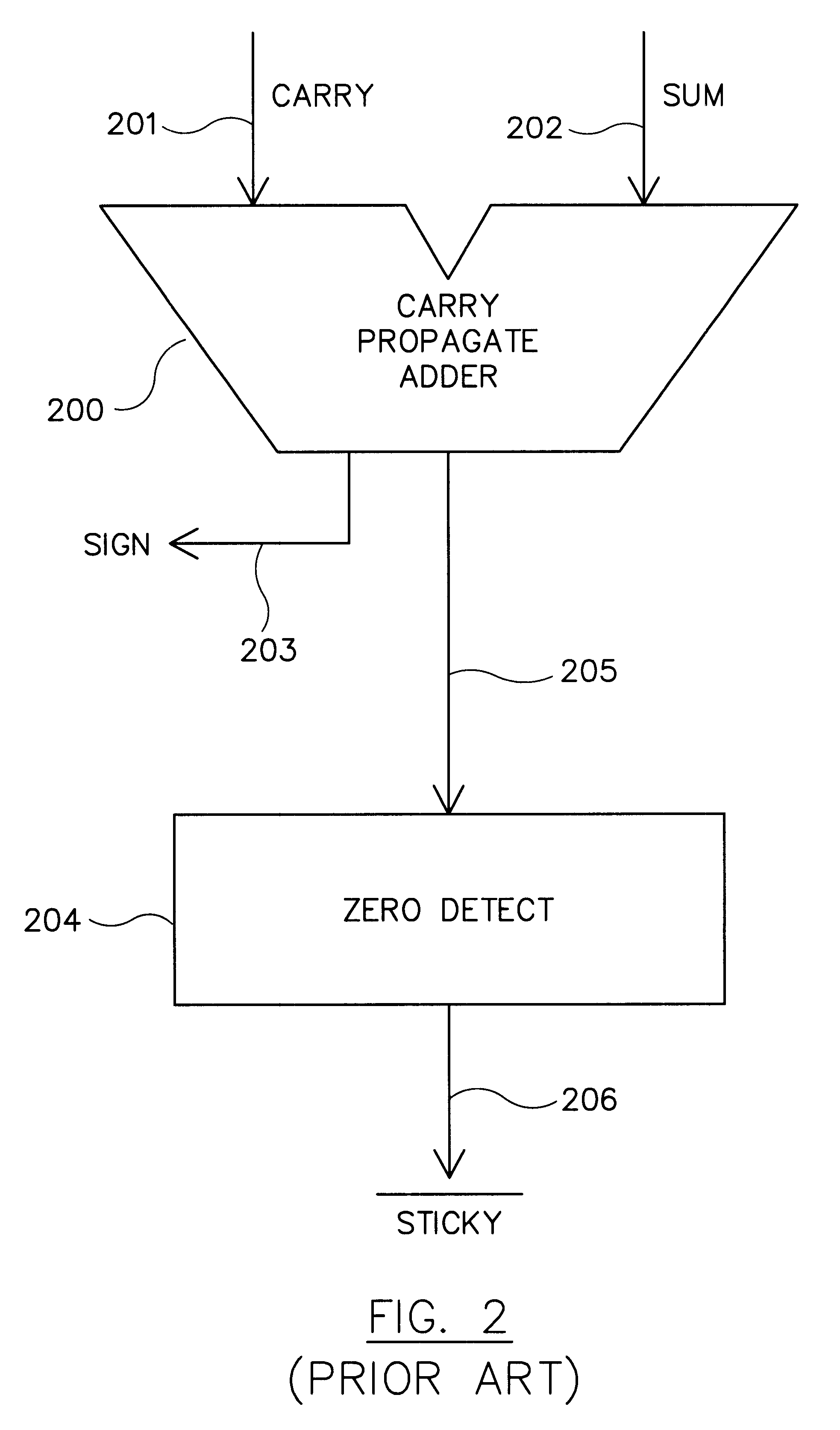Quotient digit selection logic for floating point division/square root
- Summary
- Abstract
- Description
- Claims
- Application Information
AI Technical Summary
Problems solved by technology
Method used
Image
Examples
first embodiment
Table VII compares the prior art quotient digit selection truth table with that used in the embodiments according to the present invention; the difference being in the 00.00 entry, which is introduced to prevent the partial remainder from becoming negative. The truth table corresponding to the alternative embodiment is shown in the third column of Table VII. The alternative embodiment differs from the first embodiment in the quotient digit selection for the 111.10 case and is used to make the partial remainder more positive by selecting -1 instead of a 0.
Another useful way of viewing the quotient digit selection is through Robertson's Diagrams. Robertson's Diagrams show the input partial remainder 2R.sub.j along the x-axis and the resultant intermediate partial remainder R.sub.j, along the y-axis. The different quotient digit values for q.sub.j+1 are shown in relation to the input partial remainder 2R.sub.j such that the absolute value of the resultant partial remainder R.sub.j., is...
second embodiment
According to the present invention, the quotient selection logic should selected a -1 value for one particular estimated partial remainder instance in order for the final partial remainder to be reduced to zero. This modification to the quotient select is shown in Table VIII below.
In terms of implementation, optimized quotient selection logic cells corresponding to Table VII can be altered to generate correct results for all rounding modes by adding a single two-input NOR gate to implement the alternative embodiment.
FIG. 9 depicts a logical implementation of this enhanced quotient digit selection function. In FIG. 9, a three-bit carry propagate adder 900 takes the most significant three bits of the carry and sum portions of the redundant actual partial remainder (2PRC[msb:msb-2] and 2PRS[msb:msb-2], respectively) as inputs and produces a non-redundant estimated partial remainder .times.[2:0]. An all-zero detector 901 determines if all three bits of the estimated partial remainder .t...
PUM
 Login to View More
Login to View More Abstract
Description
Claims
Application Information
 Login to View More
Login to View More - R&D
- Intellectual Property
- Life Sciences
- Materials
- Tech Scout
- Unparalleled Data Quality
- Higher Quality Content
- 60% Fewer Hallucinations
Browse by: Latest US Patents, China's latest patents, Technical Efficacy Thesaurus, Application Domain, Technology Topic, Popular Technical Reports.
© 2025 PatSnap. All rights reserved.Legal|Privacy policy|Modern Slavery Act Transparency Statement|Sitemap|About US| Contact US: help@patsnap.com



